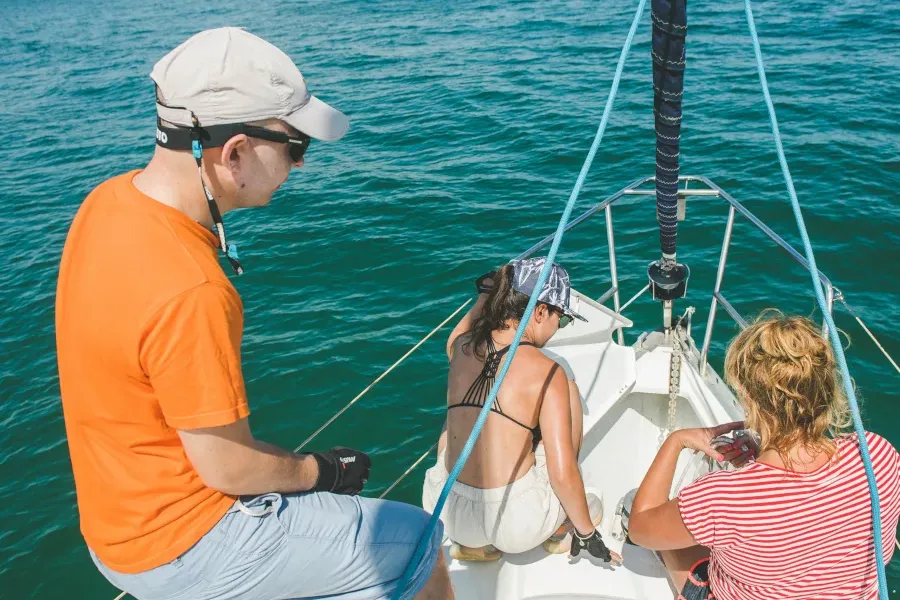Anchoring is an essential skill for boaters, allowing them to secure their vessel in a specific location. Proper anchoring techniques ensure the safety of the vessel and those on board, as well as prevent drifting or collisions with other vessels. Let’s explore some educational rules for anchoring:
First step is to select an anchorage. Choose an appropriate location to drop anchor, considering factors such as water depth, bottom conditions, shelter from wind and waves, and adequate swinging room for your vessel.
What is common type of Anchor? To select the appropriate anchor type check the bottom conditions, such as sand, mud, or rock. Common types include plow, fluke, and Danforth anchors. Ensure you have sufficient anchor chain or rope, correctly sized for your vessel and the expected depth of water. Approach the selected anchoring spot slowly and position the vessel into the wind or current, depending on prevailing conditions. Lower the anchor gradually, allowing it to reach the bottom without excessive speed or free-falling, ensuring it can set properly.
Scope and Scope-to-Depth Ratio
Let out an appropriate amount of anchor rode (chain or rope) to provide enough scope, which is the ratio of the length of the rode to the water depth. A general guideline is to use a scope of 5:1 or more, meaning five times the depth of the water. Increased scope provides better holding power and reduces the strain on the anchor. Apply reverse throttle or use the vessel’s weight to set the anchor firmly into the bottom. Gradually increase the tension on the anchor rode to ensure it is securely embedded.
Monitoring and Adjustments
Regularly monitor the anchor’s holding by checking the position of other vessels or landmarks on shore. Be mindful of changes in wind or current conditions that may affect the anchor’s holding and make adjustments as necessary. When it’s time to leave, slowly retrieve the anchor, making sure it is clear of the bottom and properly secured. Rinse the anchor and chain to remove any debris, and stow them securely.
Remember, local regulations and guidelines may vary, so it’s important to familiarize yourself with any specific rules or restrictions regarding anchoring in your area. Practicing proper anchoring techniques and following these educational rules will enhance your boating experience and promote safety while enjoying time on the water.

